Abstract
A comparative study of the metabolism of radiolabeled gibberellin (GA) 1, 19, and 20 in isolated vegetative tissues of isogenic Le and le pea (Pisum sativum) plants incubated in vitro with the appropriate GA substrate is described. The results of this study provide evidence that the enzymes involved in the latter stages of GA biosynthesis are spatially separated within the growing pea plant. Apical buds were not apparently involved in the production of bioactive GA1 or its immediate precursors. The primary site of synthesis of GA20 from GA19 was immature leaflets and tendrils, and the synthesis of bioactive GA1 and its inactive catabolite GA8 occurred predominantly in stem tissue. GA29, the inactive catabolite of GA20, was produced to varying extents in all the tissues examined. Little or no difference was observed in the ability of corresponding Le and le tissues to metabolize radiolabeled GA1, GA19, or even GA20. During a fixed period of 24 hours, stems of plants carrying the le mutation produced slightly more [3H]GA1 (and [3H]GA29) than those of Le plants. It has been concluded that the le mutation does not lie within the gene encoding the GA20 3β-hydroxylase protein.
Full text
PDF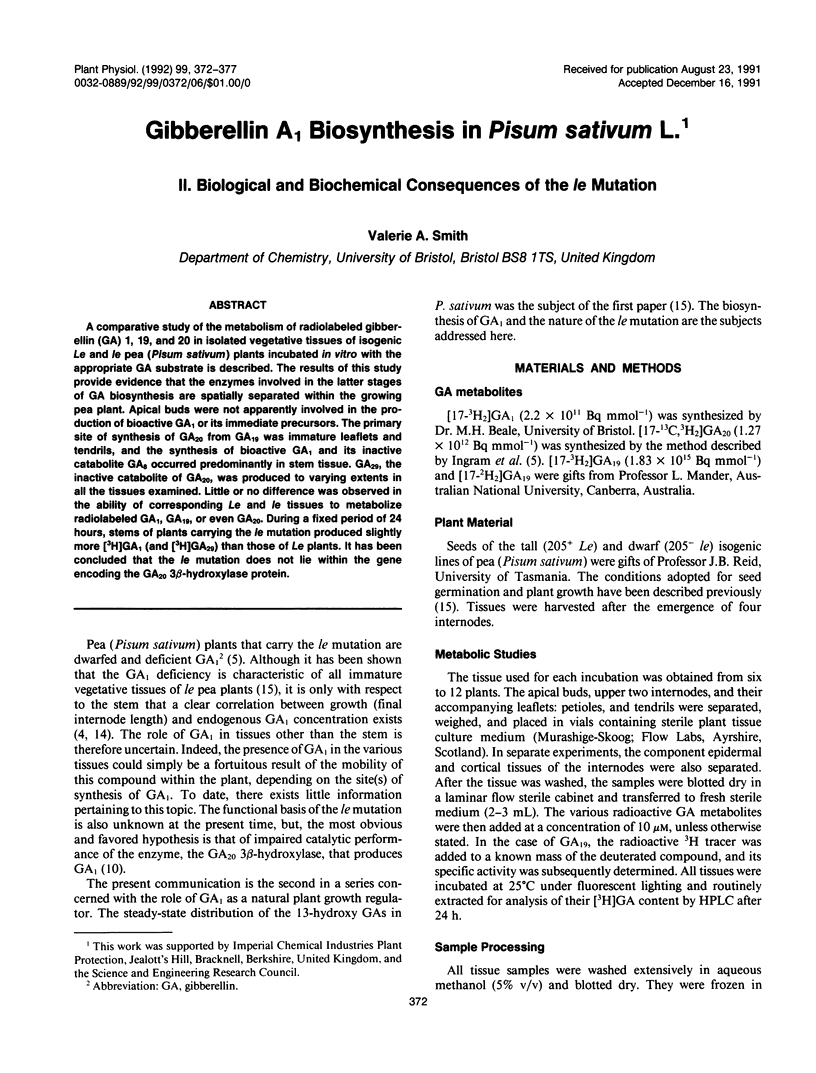
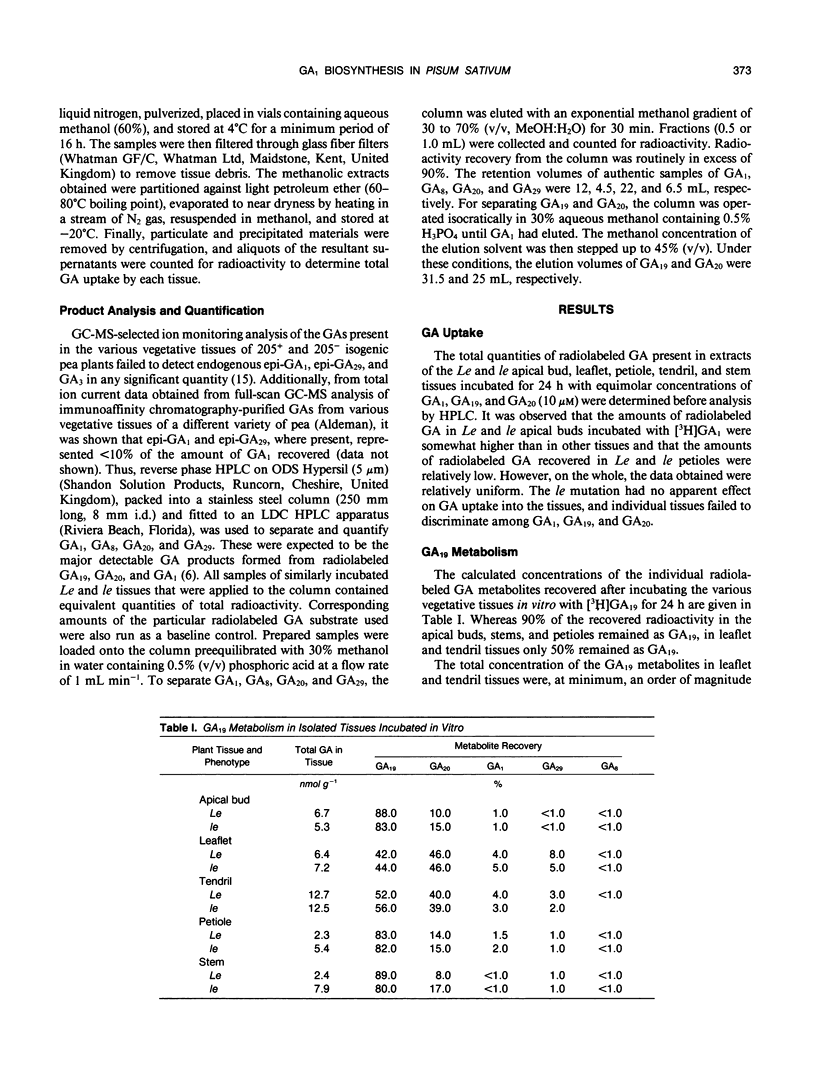
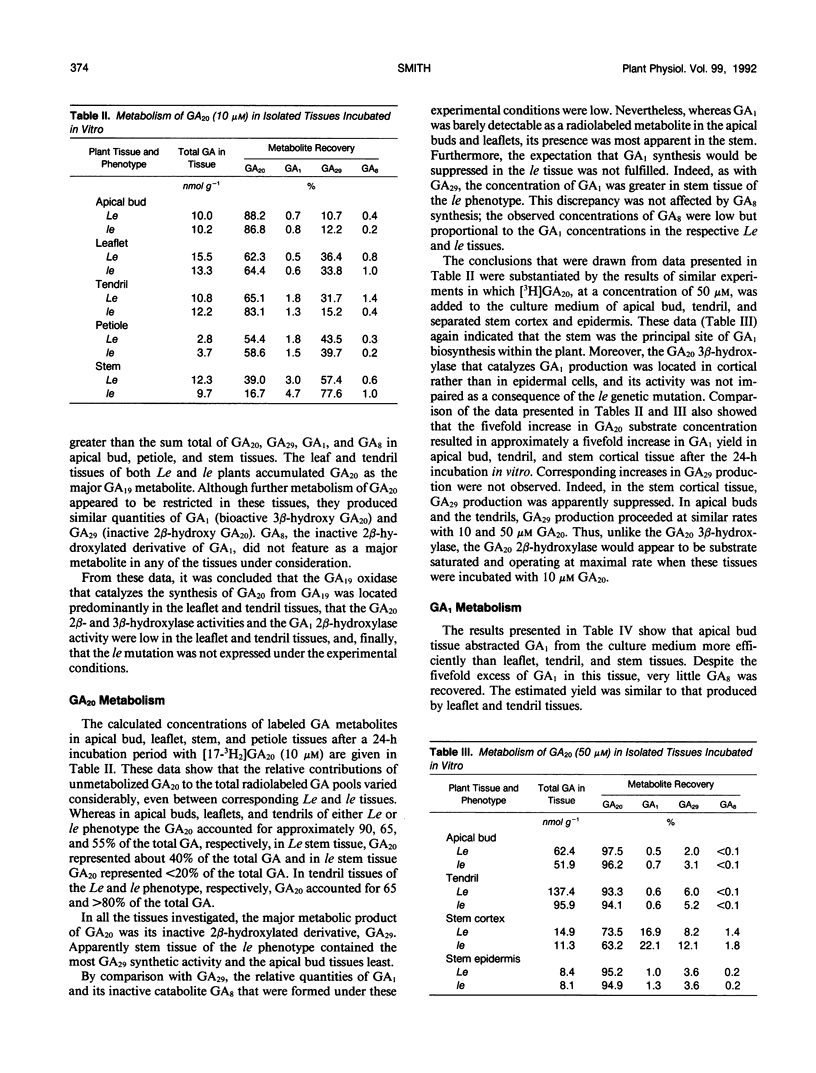
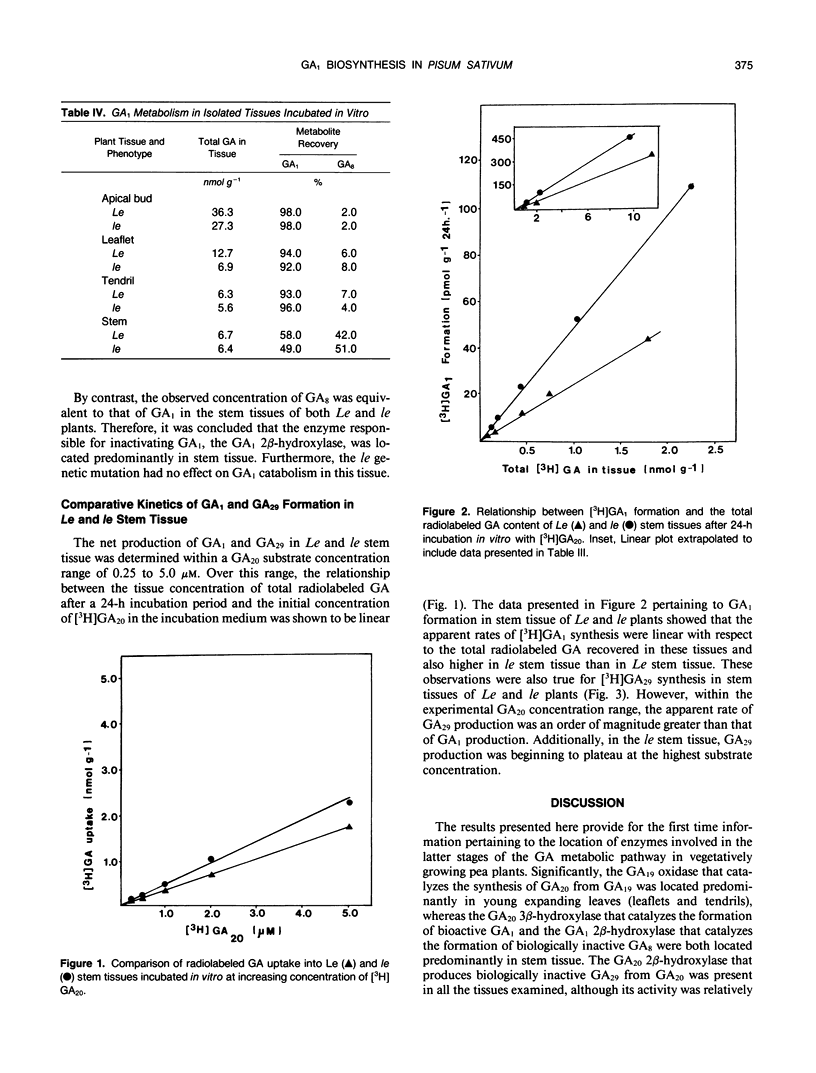
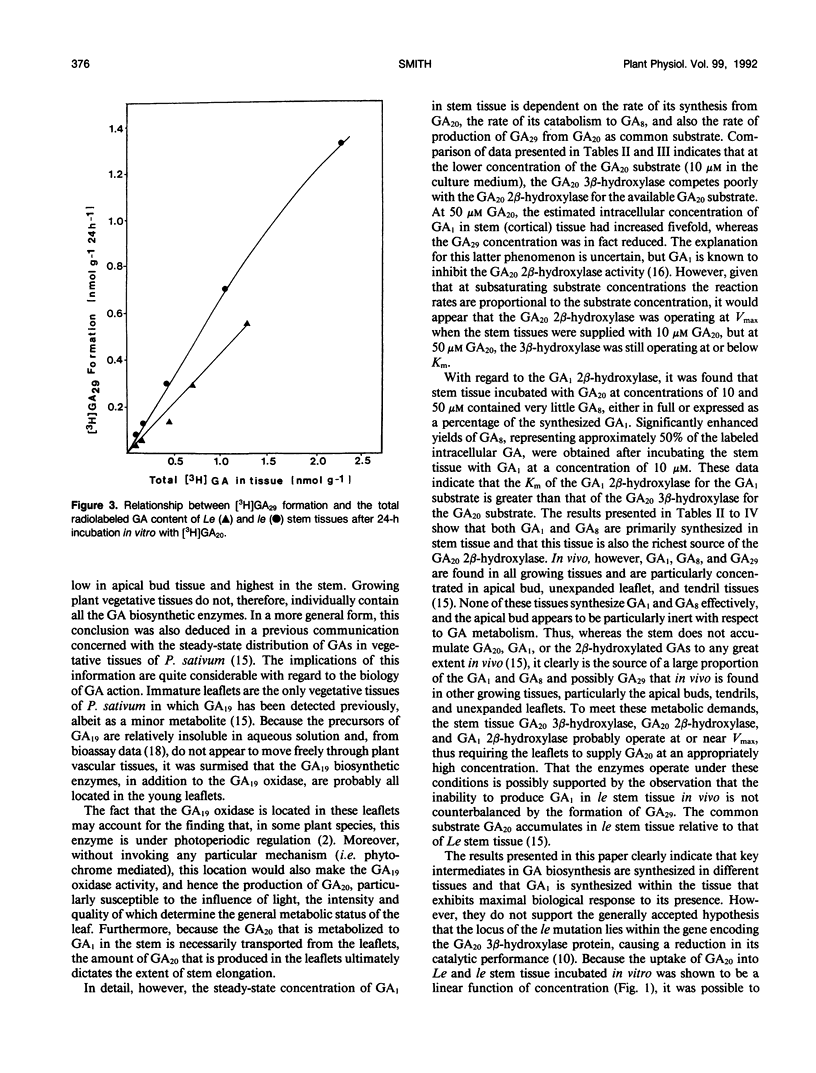
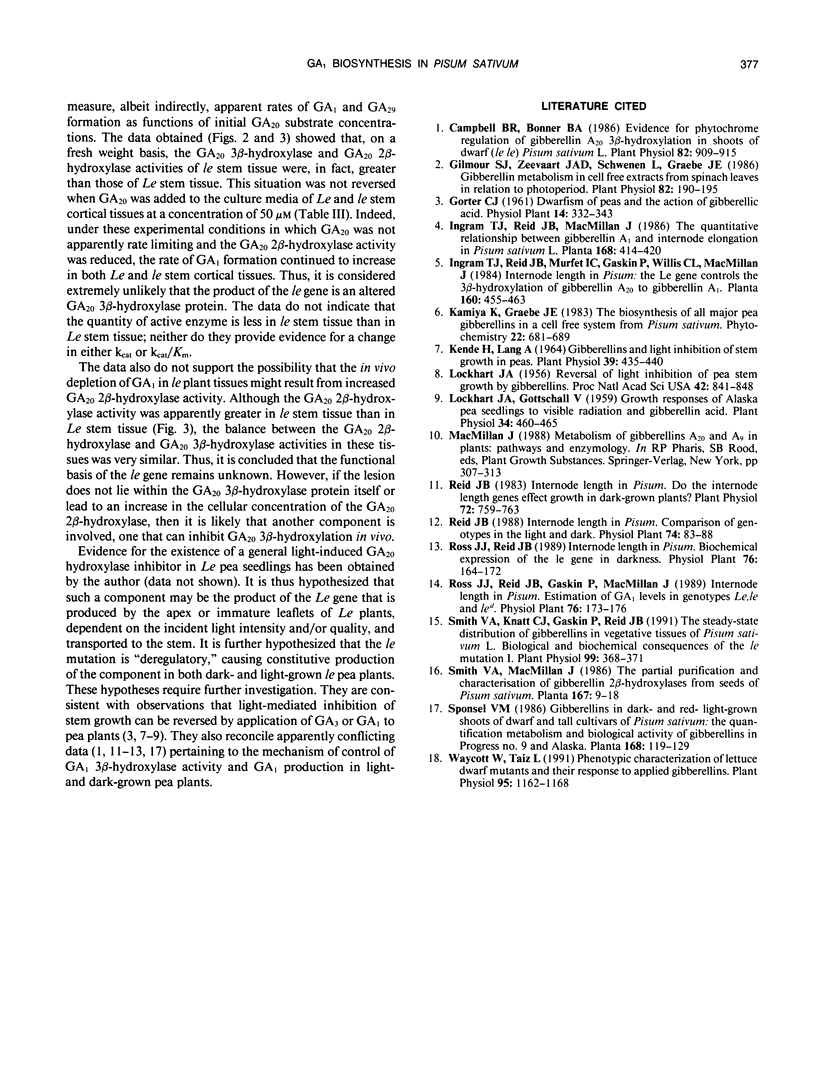
Selected References
These references are in PubMed. This may not be the complete list of references from this article.
- Campell B. R., Bonner B. A. Evidence for Phytochrome Regulation of Gibberellin A(20) 3beta-Hydroxylation in Shoots of Dwarf (lele) Pisum sativum L. Plant Physiol. 1986 Dec;82(4):909–915. doi: 10.1104/pp.82.4.909. [DOI] [PMC free article] [PubMed] [Google Scholar]
- Gilmour S. J., Zeevaart J. A., Schwenen L., Graebe J. E. Gibberellin metabolism in cell-free extracts from spinach leaves in relation to photoperiod. Plant Physiol. 1986 Sep;82(1):190–195. doi: 10.1104/pp.82.1.190. [DOI] [PMC free article] [PubMed] [Google Scholar]
- Kende H., Lang A. Gibberellins and Light Inhibition of Stem Growth in Peas. Plant Physiol. 1964 May;39(3):435–440. doi: 10.1104/pp.39.3.435. [DOI] [PMC free article] [PubMed] [Google Scholar]
- Lockhart J. A., Gottschall V. Growth Responses of Alaska Pea Seedlings to Visible Radiation and Gibberellic Acid. Plant Physiol. 1959 Jul;34(4):460–465. doi: 10.1104/pp.34.4.460. [DOI] [PMC free article] [PubMed] [Google Scholar]
- Lockhart J. A. REVERSAL OF THE LIGHT INHIBITION OF PEA STEM GROWTH BY THE GIBBERELLINS. Proc Natl Acad Sci U S A. 1956 Nov;42(11):841–848. doi: 10.1073/pnas.42.11.841. [DOI] [PMC free article] [PubMed] [Google Scholar]
- Reid J. B. Internode length in pisum: do the internode length genes effect growth in dark-grown plants? Plant Physiol. 1983 Jul;72(3):759–763. doi: 10.1104/pp.72.3.759. [DOI] [PMC free article] [PubMed] [Google Scholar]
- Smith V. A., Knatt C. J., Gaskin P., Reid J. B. The Distribution of Gibberellins in Vegetative Tissues of Pisum sativum L. : I. Biological and Biochemical Consequences of the le Mutation. Plant Physiol. 1992 Jun;99(2):368–371. doi: 10.1104/pp.99.2.368. [DOI] [PMC free article] [PubMed] [Google Scholar]
- Waycott W., Taiz L. Phenotypic characterization of lettuce dwarf mutants and their response to applied gibberellins. Plant Physiol. 1991 Apr;95(4):1162–1168. doi: 10.1104/pp.95.4.1162. [DOI] [PMC free article] [PubMed] [Google Scholar]


